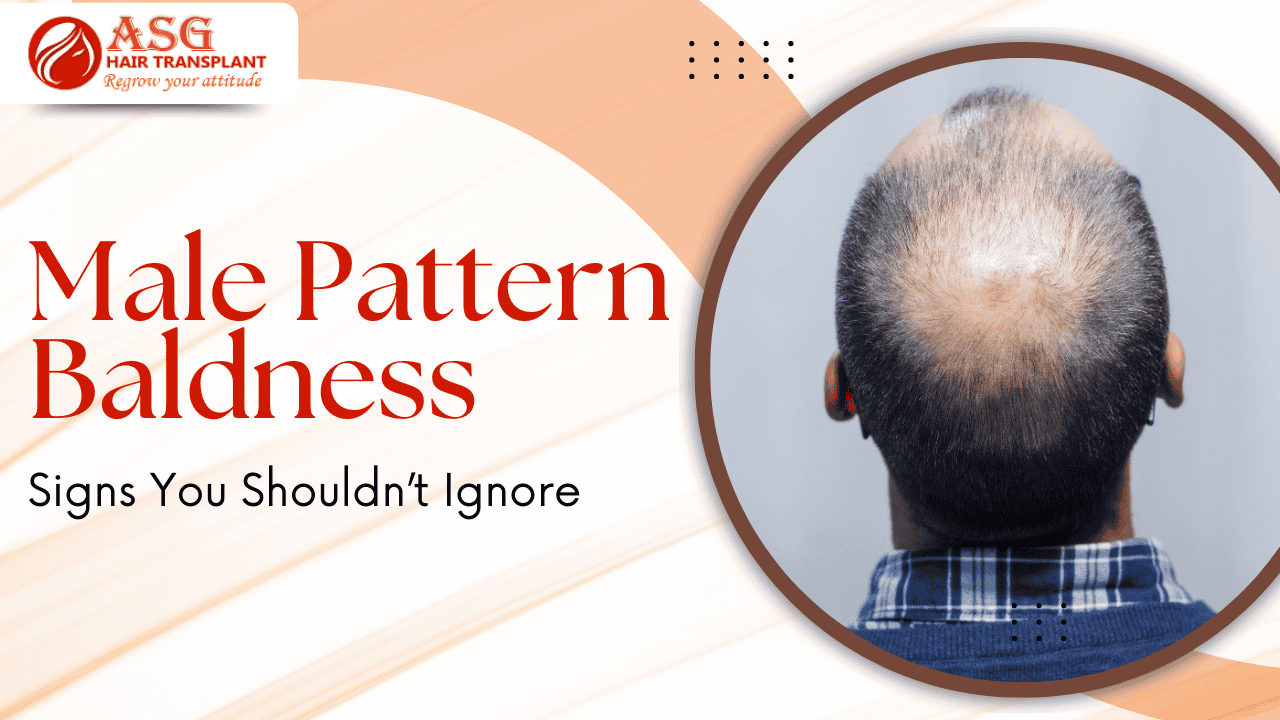Male pattern baldness is a widespread form of hair thinning in men.
It follows a pattern, starting with a receding hairline at the temples and thinning at the crown. Over time, these areas may expand and eventually lead to partial or complete baldness on the top of the head. While it’s not a medical concern, it can affect self-esteem and confidence. It usually develops slowly over time.
Why does hair loss occur?
Hair loss can be temporary for some people and it grows naturally with time. It can be due to aging, monsoon change, hormonal imbalance, stress, food indigestion, etc. But for people, hair loss has become a major problem. If we compare, hair loss is more frequent in men than women. Hair follicles (structures responsible for hair growth) in males become sensitive and it affects the areas of the scalp and develop a much shorter growth phase. That’s why the hair might shed in a matter of weeks or months, rather than over several years. The hair becomes shorter and finer because of fewer hair growing from each follicle.
Signs Related to male pattern baldness
Male pattern baldness, or androgenetic alopecia, shows a distinct set of signs that typically worsen gradually over time. Signs that should not be ignored in male pattern baldness includes:
- Receding hairline
- Thinning hair
- Hair becoming finer and shorter
- Decreased hair volume
- Slower hair regrowth
- Bald spots
- Itchy scalp
Treatment for male pattern baldness
While male pattern baldness is largely genetic and can’t be completely reversed, there are several effective treatments to slow down hair loss, regrow some hair, or restore appearance. ASG Hair Transplant Centre in Ludhiana can help you to regrow your hair. Our team will suggest the best options for your hair treatment. Some treatments includes:
- Minoxidil: It is a topical solution that increases blood flow to the scalp, stimulating hair growth. It is also available in oral form.
- Finasteride: An oral prescription medication that blocks the hormone DHT, which contributes to hair loss.
- Combining Minoxidil and Finasteride: Studies suggest that using both medications together can be more effective than using either one alone.
- Platelet-rich plasma (PRP) Therapy: Involves injecting concentrated platelets from the patient’s blood into the scalp to stimulate hair follicle health.
- Hair transplant: It usually takes at least three weeks to recover. It may take some time (at least a year) before you see the full results.
Conclusion
Male pattern baldness is a common and natural condition that affects many men as they age, often due to some problem like genetic change, etc. While it cannot be completely cured, several effective medical treatments can be helpful to slow hair loss or to promote regrowth. Early diagnosis and consistent treatment can make a significant difference in managing the condition. Before it’s too late, consulting with your healthcare provider or dermatologist is the best first step toward. Choosing the right approach for your needs whether it’s medication, lifestyle changes, or hair restoration procedures can turn out in your favor.


